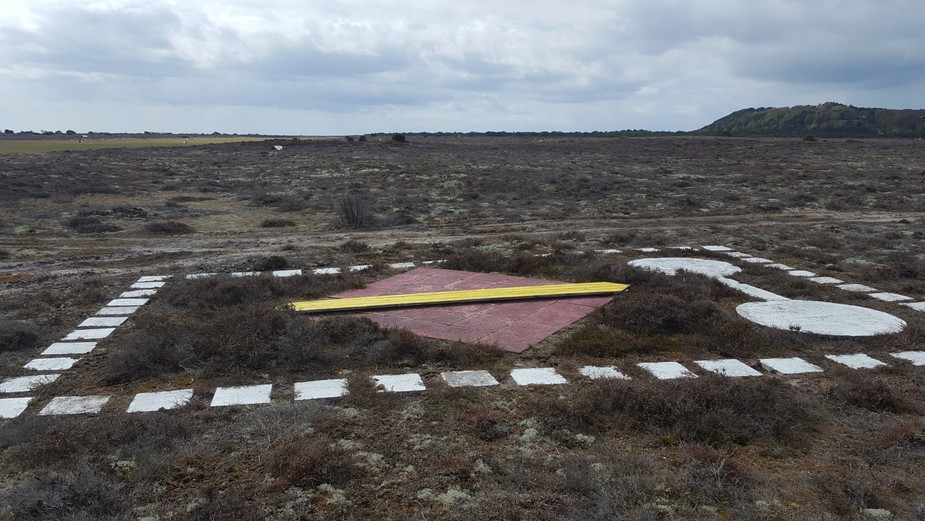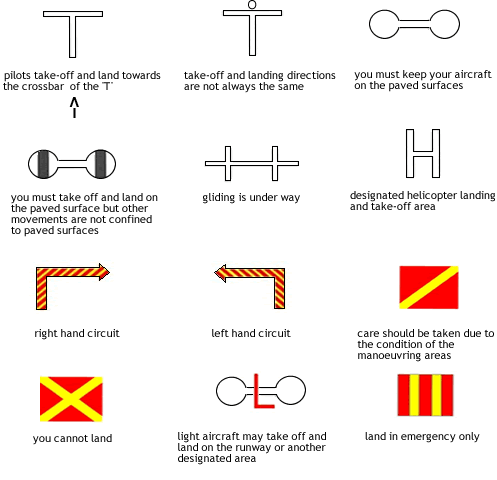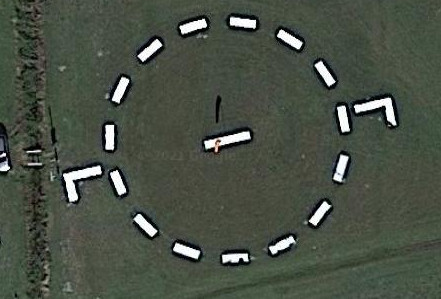I would not trust the signal square much… How can you know when the signals have been updated last? Could as well be 3 days ago and their meaning is irrelevant by now or 5 minutes ago… That’s why the one I knew about, in LFOL was removed, because it was not used and could lead to problem if used for the reason mentioned above.
172driver wrote:
They were part of my PPL training (KBUR, late 90s)
Interesting. I earned my PPL in 2000 and didn’t know about these. Perhaps at some point in the late 90’s they were officially removed?
Peter_G wrote:
It was always drummed in to me that it is the Wind Sock which is the definitive authority
If not sure sure if it’s ATIS, ATC, windsock or T, go for the windsock, sometimes it’s not a choice 
At Toussus (LFPN), their runway is entangled to Orly (LFPO), for noise & routings Orly tend to keep tailwinds and CAT can cope with it but it makes a big surprise for a SEP arrival following LFPO traffic flow to find that you can’t land on LFPN active runway no matter how you try (you just float forever), so yes at the end of the day, it’s windsock & runway length that have the final authority !
I am surprise by all the answers, I’ve read here. I learned during my PPL training in France to always read the signal square on non-manned airport (A/A radio only airfield).
I don‘t recall seeing a “T” being used but the arrow which tell you to do right or left hand circuit and then you decide of the runway to use depending on wind, preferred runway or the sun position, whatever you like.
Edit: ok after a quick check on google earth I see that all airfield where I used to check the signals square are not maintained and now unreadable…
They still have one at White Waltham. I have never seen it being adjusted but I presume they do – they employ a reasonable number of ground crew and need to give them things to do!
As others say, if there’s no radio and no-one else around then I’m going with the windsock rather than a piece of wood which might not have been moved for quite some time.
I think signal squares are used at every licensed Danish airfield that does not require the use of R/T. However, I believe that the “T” is only used at gliding fields.

This one is from EKAT Anholt. I have never seen it been adjusted, so whether the square is a “current thing” I am not sure. I guess some pilots would say no.
Peter_G wrote:
If the field is deserted, and/or even at Licensed fields which has ATC but it is ‘out of hours’, you have no guarantee that the T reflects the latest wind.
It was always drummed in to me that it is the Wind Sock which is the definitive authority.
Common misunderstanding, also with many German pilots! The landing-T does not at all say that you must land in one direction – it “just” says that you must not land in the other direction.
Therefore obviously the windsock is the the definite authority on in which direction you land if you land at all. If the windsock and the T show opposite directions, it might not be a good idea to land at this field at all – because as said: You must not land in the direction opposite to the T!
And before everyone starts shouting “safety”, there are actually sometimes good reasons. We have fields in Germany (unfortunately) where for some part of the day landings are only allowed in one direction (e.g. for noise abatement). In these cases it is actually correct that the landing T is sometimes showing a different direction than the wind sock…
Peter wrote:
It’s like the Aldis (?) lamp
Here is some information on the operation of the lamp:
http://www.airwaysmuseum.com/Aldis%20lamp%20&%20Very%20pistol.htm
Here in Germany the signal squares are not a requirement any more. We found that out when we had to re-certify our airfield due to a relocation of the runway in 2014.
There should be something in the EASA airfield requirements, but I have never looked into these.
I’ve just had a quick look at all the airfields I’ve visited (92 in 7 countries) saved in google mymaps. The only countries with enough airfields to draw conclusions are:
France
Zero signal squares. However, approx 3/4 of the smaller aéroclub-type fields have a tarmac or grass outline that looks like it was originally one, usually near the windsock. Or they could be unmarked helipads  I assume the signals square died out with VHF radios becoming standard. Funnily the symbols were in my PPL theory (2007) but I’ve never ever seen one in France. I did actually find one at Pontarlier LFSP today on google maps but it looks decrepit:
I assume the signals square died out with VHF radios becoming standard. Funnily the symbols were in my PPL theory (2007) but I’ve never ever seen one in France. I did actually find one at Pontarlier LFSP today on google maps but it looks decrepit:

UK
7 airfields with signal squares out of 32, all smaller airfields. I’ve never used them, or even looked at them. I once I got trapped at the runway threshold when a couple of planes landed on the downwind runway, following the T and ignoring the windsock and my increasingly stressed radio calls. Apart from the T and the circuit arrow I’ve forgotten what the symbols mean. Lifted from pilotfriend:

USA
No signal square. There is often a circle highlighting the position of the wind sock which also shows the pattern, which is a really good idea. I also like it when airfields paint their name on the hangar roof, taxiway or ramp, like in Ultranomad’s photos. A clear one from Manatee 48X:
